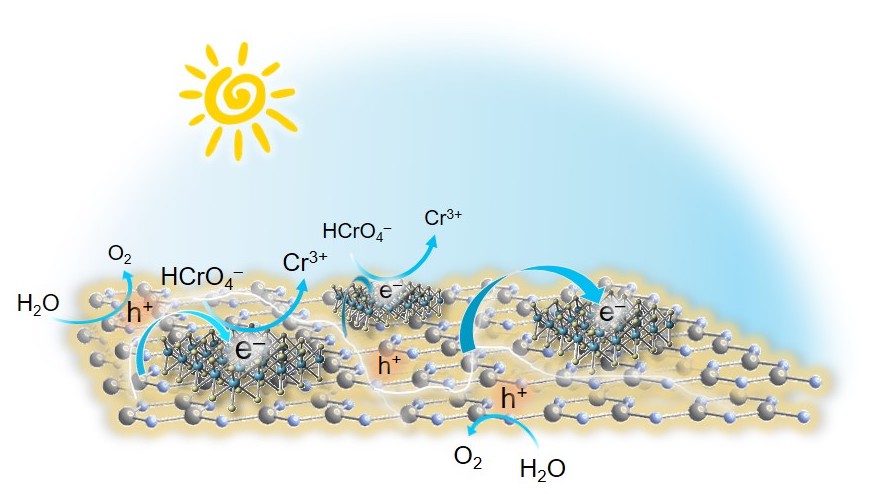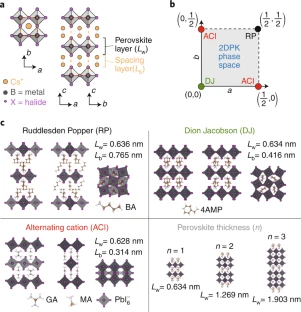RESEARCH HIGHLIGHTS

We resolve single-shot polariton condensate polarization dynamics, revealing a high degree of circular polarization persistent up to T=170 K. The statistical analysis of pulse-to-pulse polariton condensate polarization elucidates the stochastic nature of the polarization pinning process, which is strongly dependent on the pump laser intensity and polarization. Our experiments show that by spatial trapping and isolating condensates from their noisy environment it is possible to form strongly spin-polarized polariton condensates at high temperatures, offering a promising route to the realization of polariton spin lattices for quantum simulations.
More information can be found in: Y. C. Balas, E. S. Sedov, G. G. Paschos, Z. Hatzopoulos, H. Ohadi, A. V. Kavokin, and P. G. Savvidis. "Stochastic Single-Shot Polarization Pinning of Polariton Condensate at High Temperatures." Phys. Rev. Lett., 128(11), 117401 (2022).

Highly efficient and cost-effective photocatalysts are among the most prominent targets in the field of environmental remediation and clean energy production. Here, we report that 2D/2D layer heterostructures composed of exfoliated Ni-doped MoS2 nanosheets and g-C3N4 layers can carry out photocatalytic Cr(VI) reduction in aqueous solutions with outstanding activity, exhibiting apparent QYs as high as 29.6 % and 23.7 % at 375 and 410 nm. We show that Ni doping of MoS2 markedly increases the photochemical activity, which, together with electrochemical, spectroscopic and theoretical DFT studies, arises from the enhanced carrier density and mobility at the Ni-MoS2/g-C3N4 interface. In addition to the favorable charge transport properties, delineation of the photoinduced oxidation reactions by gas monitoring techniques reveals that the high efficiency also arises from fast water oxidation kinetics. The results of this work mark an important step forward in understanding and designing low-cost and earth-abundant catalysts for detoxification of Cr(VI)-contaminated industrial effluents.
More information can be found in: Eirini D. Koutsouroubi, Ioannis Vamvasakis, Maria G. Minotaki, Ioannis T. Papadas, Charalampos Drivas, Stelios A. Choulis, Georgios Kopidakis, Stella Kennou, Gerasimos S. Armatas Ni-doped MoS2 modified graphitic carbon nitride layered hetero-nanostructures as highly efficient photocatalysts for environmental remediation, Appl. Catal. B: Environ. 297, 120419 (2021).

Achieving technologically relevant performance and stability for optoelectronics, energy conversion, photonics, spintronics and quantum devices requires creating atomically precise materials with tailored homo- and hetero-interfaces, which can form functional hierarchical assemblies. Nature employs tunable sequence chemistry to create complex architectures, which efficiently transform matter and energy, however, in contrast, the design of synthetic materials and their integration remains a long-standing challenge. Organic–inorganic two-dimensional halide perovskites (2DPKs) are organic and inorganic two-dimensional layers, which self-assemble in solution to form highly ordered periodic stacks. They exhibit a large compositional and structural phase space, which has led to novel and exciting physical properties. In this Review, we discuss the current understanding in the structure and physical properties of 2DPKs from the monolayers to assemblies, and present a comprehensive comparison with conventional semiconductors, thereby providing a broad understanding of low-dimensional semiconductors that feature complex organic–inorganic hetero-interfaces.
More information can be found in: Blancon JC, Even J, Stoumpos CC, Kanatzidis MG and Mohite AD, Semiconductor physics of organic-inorganic 2D halide perovskites, NATURE NANOTECHNOLOGY 15 (12), 969-985 (2020).

A major frontier in strong field laser physics and nonlinear optics is the interaction of powerful terahertz (THz) pulses with matter. A plethora of scientific challenges and applications are presently under study, like table-top electron acceleration, THz-enhanced attosecond pulse generation and strong electric and magnetic THz field interactions with matter. However, despite the rapid development of THz science during the last two decades, the majority of available table-top THz sources remain rather weak limiting the interactions of THz radiation with matter mostly in the realm of linear optics. In this work, using intense ultrashort mid-infrared laser pulses to drive laser beam filamentation in ambient air, we demonstrate generation of sub-millijoule single-cycle THz pulses with unprecedented THz conversion efficiency (>2%), exceeding by far any previously reported experimental values for plasma-based THz sources. Moreover, due to the large bandwidth of the generated THz radiation (∼20 THz), the peak THz electric and magnetic fields exceed the 100 MV/cm and 33 tesla, respectively. Based on the reported experimental findings and theoretical estimates, it is projected that soon multi-millijoule THz pulses with peak electric and magnetic fields in the gigavolt per centimeter and kilotesla level, respectively, will become available. Quasi-static ultrashort electric and magnetic bursts at these intensities will enable extreme nonlinear and relativistic science.
More information can be found in: A. D. Koulouklidis, C. Gollner, V. Shumakova, V. Y. Fedorov, A. Pugžlys, A. Baltuška, and S. Tzortzakis, "Observation of extremely efficient terahertz generation from mid-infrared two-color laser filaments." Nature Communications, 11, 292 (2020).